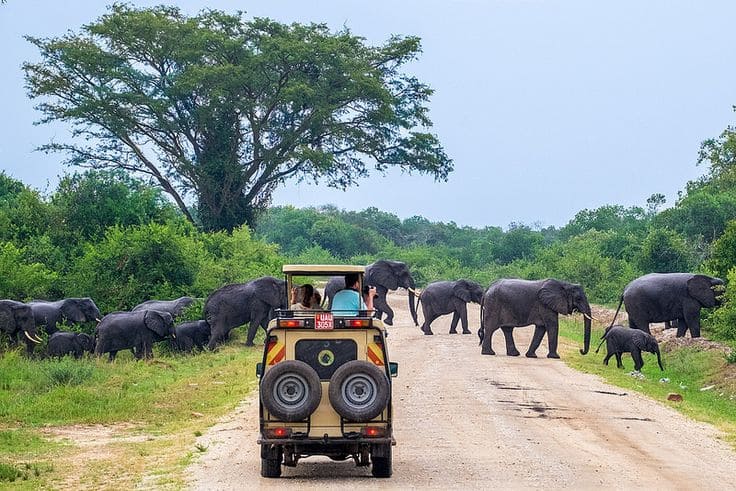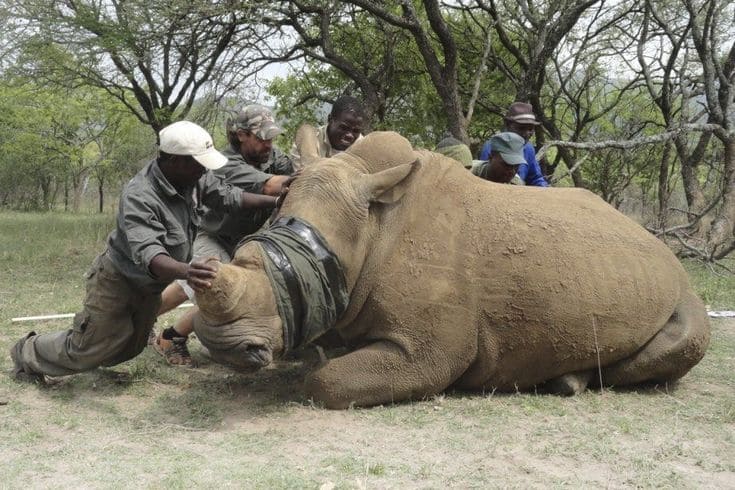
The Kazinga Channel Uganda’s Living Waterway
August 22, 2025
The Cheetah Africa’s Speed King in a Race Against Time
August 22, 2025Africa’s Big Five Now and Future
At Otter African Safaris, we believe that every journey into the wild should be more than just a vacation; it should be a connection to the past, an understanding of the present, and a step toward a better future for Africa’s wildlife. Among the most iconic creatures you will encounter on safari are the African Big Five: the lion, elephant, buffalo, leopard, and rhinoceros. These majestic animals capture the imagination of travellers and conservationists alike.
But beyond the game drives and photo moments lie important stories about their survival, history, and the role you can play in protecting them.
Let’s explore the top questions about the Big Five’s past, present, and future and how Otter African Safaris helps you make a real impact.
1. Why Are They Called the ‘Big Five’?
Past:
The term “Big Five” originally referred to the five most difficult animals to hunt on foot in Africa. Colonial big game hunters used this label for the lion, elephant, buffalo, leopard, and rhinoceros due to their size, strength, and danger.
Present:
Today, the phrase has been reclaimed for conservation and eco-tourism. These animals are no longer trophies but ambassadors of the wild, attracting millions of safari-goers each year.
How You Can Help:
By choosing ethical safari operators like Otter African Safaris, your trip directly supports wildlife conservation and shifts the narrative from exploitation to preservation.
2. What Is the Conservation Status of Each Big Five Animal Today?
Lion – Vulnerable:
Lion populations have declined drastically due to habitat loss, human-wildlife conflict, and poaching. Less than 20,000 remain in the wild.
Elephant – Endangered (Forest), Vulnerable (Savannah):
Ivory poaching and habitat encroachment have led to severe population declines. African elephants are under constant threat from illegal trade.
Buffalo – Least Concern:
Cape buffalo are more resilient, but they face threats from diseases, habitat degradation, and conflict with livestock.
Leopard – Vulnerable:
Masters of camouflage, leopards are elusive and decreasing in number due to habitat fragmentation, poaching, and human conflict.
Rhinoceros – Critically Endangered (Black Rhino), Near Threatened (White Rhino):
Rhinos are targeted for their horns in illegal markets. Conservation efforts have made some progress, but the black rhino population numbers just over 5,000 today.
How You Can Help:
Your visit supports conservation through park fees, community programs, and direct donations. You can also help spread awareness by sharing your experiences and supporting rhino and lion protection organisations.
3. How Do the Big Five Impact African Ecosystems?
Past:
Historically, these animals helped shape Africa’s landscapes through migration patterns, feeding behaviours, and predator-prey dynamics. Indigenous tribes revered them in folklore and rituals.
Present:
They are keystone species, meaning their presence maintains the balance of the ecosystem. For example:
- Elephants open up habitats for smaller species.
- Lions control herbivore populations.
- Rhinos shape grassland ecosystems.
How You Can Help:
Join conservation safaris or volunteer programs organised through Otter African Safaris. We work with trusted partners to offer guests hands-on conservation experiences.
4. What Role Do Local Communities Play in Big Five Conservation?
Past:
Colonial policies often pushed local communities out of protected areas, leading to conflict and resentment. Wildlife was seen as a colonial asset, not a community benefit.
Present:
Community-based conservation is transforming the relationship between people and wildlife. Today, many conservancies are owned or co-managed by local people.
Otter African Safaris partners with lodges and reserves that employ local staff, invest in schools, and share revenue with communities.
How You Can Help:
Ask your guide about the community projects supported by your lodge. Choose to buy local crafts, support village visits, and donate to community education initiatives.
5. How Can Tourism Protect and Not Harm the Big Five?
Past:
Mass tourism and trophy hunting contributed to habitat destruction and population decline.
Present:
Responsible tourism is now one of the strongest allies of conservation. When done ethically, safari tourism funds:
- Anti-poaching patrols.
- Ranger salaries.
- Wildlife monitoring.
- Community development.
How You Can Help:
- Travel with sustainable operators like Otter African Safaris.
- Avoid lodges that offer activities like cub petting or walking with lions (often exploitative).
- Offset your carbon footprint and leave no trace.
- Encourage others to experience wildlife ethically and respectfully.
Your Safari Can Make a Difference
Every moment you spend watching a pride of lions or listening to the rumble of an elephant herd is made possible by decades of conservation effort. But the story isn’t over, and you are now part of it.
At Otter African Safaris, we believe in:
- Conscious travel that benefits both wildlife and communities.
- Education and storytelling that empower action.
- Creating unforgettable experiences that leave a positive legacy.
When you book a safari with us, you’re not just going on a trip; you’re becoming a protector of the wild.
Ready to Meet the Big Five?
Join Otter African Safaris on a once in a lifetime journey to Kenya, Tanzania, Uganda, or Rwanda and experience Africa’s wildlife through authentic, responsible, and impactful adventures.
Contact us today to begin planning your Big Five safari and help protect their future.
Contact us: info@otterafricansafaris.com or otterafricansafaris94@gmail.com
Visit: www.otterafricansafaris.com
Call: +256773945555 or +256773932802. #OtterAfricanMagic



